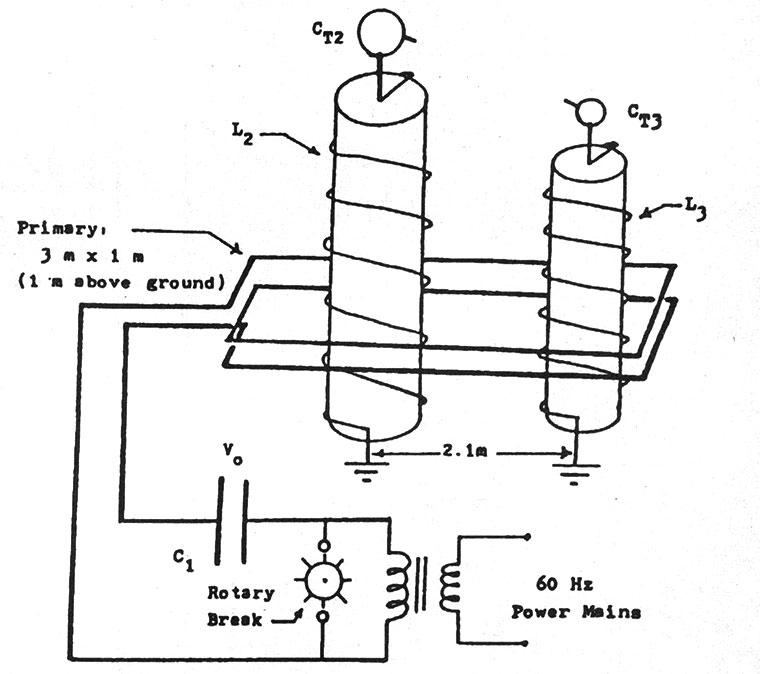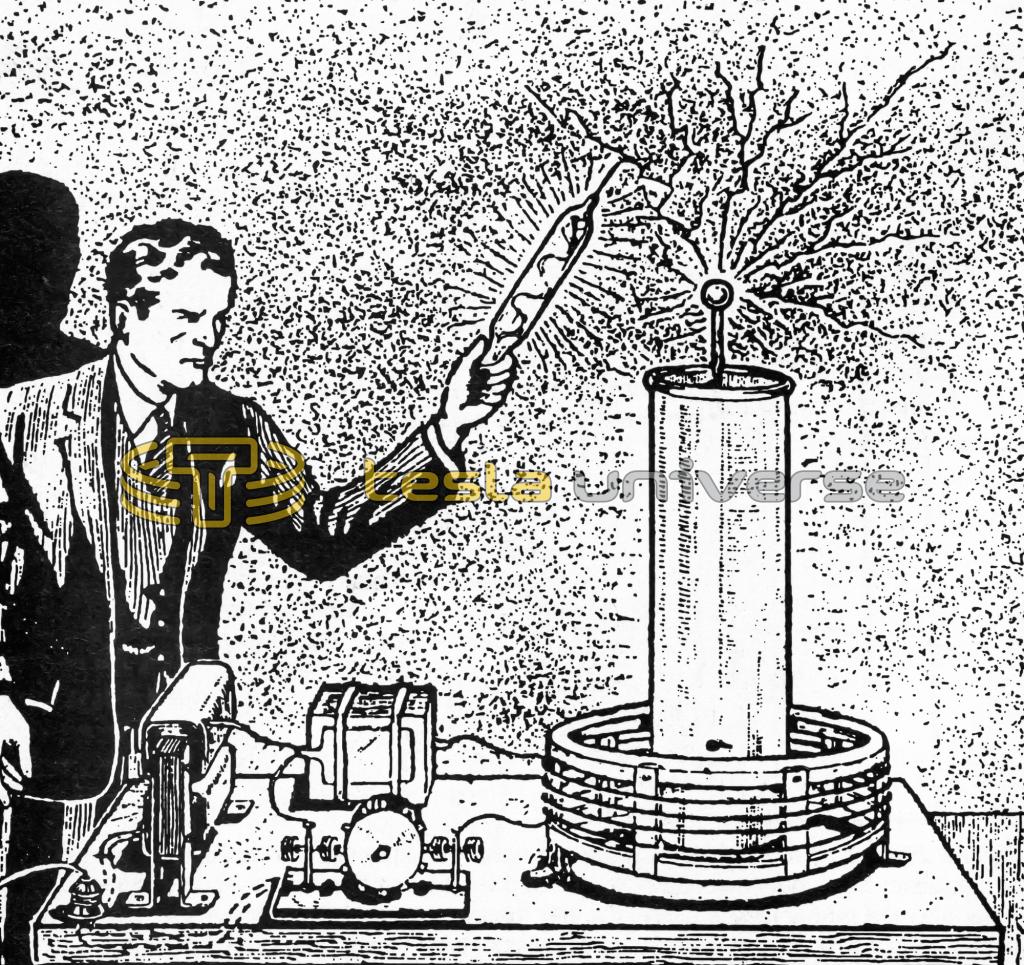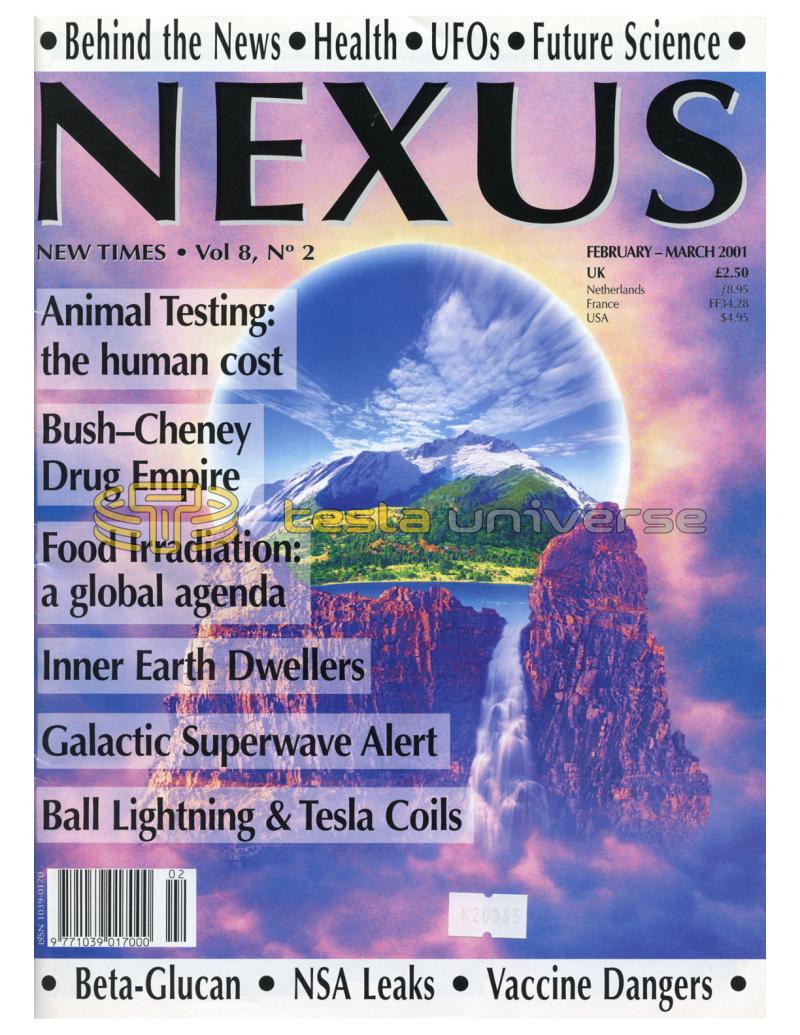
Nikola Tesla Articles
Making Ball Lightning to Order
The phenomenon of ball lightning has been a fascination over the centuries but remains a mysterious riddle to scientists, partly due to its transient and elusive nature.
Typically although not exclusively occurring during thundery weather, this electrical artefact can take various forms — most commonly appearing as a globe of light, about the size of a grapefruit, which fades out harmlessly after a few minutes. However, historical records also report metre-wide fireballs which exploded like a bomb, wrecking houses and tearing off limbs from those caught in the blast.
Consider, for example, the following 19th-century report from France, which archaically refers to the phenomenon as a “thunderbolt”:
“On 11 July 1809, at Châteauneuf-Iès-Moustiers at about eleven o'clock in the morning, a thunderbolt entered the church just as the bell was ringing and a large congregation had taken their seats. The thunderbolt exploded with great force, wounding eighty-two people and killing nine outright... There were several dogs in the church at the time of the explosion, and all of them were killed.”
Another 19th-century case provides examples of the weird effects that can occur during close encounters with ball lightning:
“On 24 August 1895, about ten o'clock in the morning, several people saw a whitish globe of about one-and-a-half inches in diameter descend out of a violent rainstorm and, on touching the ground, break up into two smaller globes. These ‘lightning beads’ immediately rose to the height of the chimneys on the nearby houses. One went down a chimney and exploded in the kitchen, causing great damage. The other ball descended another chimney, passed through a room in which were a man and a child, without harming either of them, and went through the floor, perforating a brick with a clean round hole about half an inch in diameter.”
Speculations abound as to the true nature of ball lightning, and over the past 156 years a remarkable family of theoretical models for these mysterious electric fireballs has appeared in the scientific literature. Some of these have been quite bizarre, such as the proposal that ball lightning is the result of nuclear fission, the active process of atomic bombs. However, the number of actual experiments in the laboratory has been minimal, and armchair theorising based on second- and third-hand reports has been the most common way of tackling the enigma of ball lightning.
THE CORUMS' BREAKTHROUGH
Attempts at reproducing ball lightning have been disappointing and have eluded physicists worldwide, although success in this would of course be a giant step forward, as ball lightning could then be made to order and experimented upon in the lab.
It is then of the greatest significance that two electrical engineers, Kenneth Corum and James Corum, in Ohio, USA, have recently succeeded in producing, to order, such electric fireballs in many beautiful colours.
However, just as startling is their revelation that the instructions to accomplish this have been publicly available for over a hundred years, tucked away in the notebooks of the legendary tum-of-the-century physicist, Dr Nikola Tesla. It is the Corums' unique reinterpretation of Tesla's 1899 Colorado Springs notes that has brought what amounts to a long-overlooked secret back into the public domain.
As if this weren't enough, another surprise is the Corum brothers' revelation that ball lightning is actually fairly simple and easy to produce and that the inexpensive apparatus needed already exists in many amateur enthusiasts' workshops and countless college science departments around the world. Predictably, perhaps, this is the Tesla coil.
Whilst such fireball production would be beyond the layperson, students and amateur physicists who have specialised in exploring the intriguing inventions of the legendary Nikola Tesla should certainly have enough technical information to put the required hardware together, given average electrical workshop resources. The apparatus used — the Tesla coil, many of which have been built at home by electrical hobbyists in their garage workshops — is a common feature of the physics departments of many colleges and universities.
TESLA COIL BASICS
For even the uninitiated, a basic description of what the Tesla coil is and does is fairly easy to comprehend, and provides enough information to appreciate what is involved in the laboratory production of ball lightning.
A glance at the accompanying illustration shows that the Tesla coil consists of two coils of copper wire wound around cylinders — one wide squat one, called the primary, and a taller narrow one which sits inside it, called the secondary. At the top of the secondary is a brass or copper ball joined to the coil; and as can be seen from the drawing, this is also the terminal from which spectacular high-frequency electrical streamers are emitted when the device is in operation.
In fact, the Tesla coil was specifically constructed to produce such high-voltage discharges of microwaves, and it is within these long streamers that the electric fireballs appear — and remain when the power has been switched off.
These primary and secondary coils, which are not physically connected to each other, are set within circuitry which includes various electrical units (termed a spark gap and a capacitor) designed to pump up the power output to very high levels extremely quickly. For those with technical knowledge, peak power of 100 kW in 10 microseconds is typical.
A popular demonstration is depicted in the drawing, where a vacuum tube or a fluorescent strip light glows by itself when held near the terminal due to the high levels of free electricity discharged in the air around it.
REINTERPRETING TESLA'S NOTES
So if the Tesla coil has been so freely available around the world since it was patented by Tesla in 1897, why has nobody used it to produce ball lightning before now?
This issue is even more puzzling when it is realised that Tesla himself frequently induced fireballs during his experiments. He is quoted as stating: “I succeeded in determining the mode of their formation and producing them artificially.” In fact, the way he described them, they just seemed to bubble readily from his coil apparatus.
The answer to this puzzle lies in the incredible fact that Tesla's published notes, despite being studied by countless highly qualified physicists over the past hundred years, have simply been misunderstood! Physicists have tried to copy Tesla's results and failed, putting such failures down to his ambiguous notation style.
The Corums relate that after taking part in an International Tesla Symposium at Colorado Springs, where Tesla's laboratory remains, they were on the plane flying home to Cleveland:
“It was a puzzle to us ... we continued to compare chapter 34 with the photographs in Tesla's published notes. And then it struck us. We just weren't using the circuit configuration which Tesla shows us. When we got back, we rearranged our apparatus...”
THE CORUMS' RECONSTRUCTION
Intriguingly, the Corums then go on to describe what happened:
“Small points of light seemed to appear from nowhere, then several of the floating lights were struck by high-voltage streamers emanating from the terminal of the secondary coil.
“Suddenly we observed multitudes of fireballs with diameters ranging up to several centimeters which were ‘born’ within the streamers emitted by the coils ... lifetimes typically ranged from one-and-a-half to several seconds...
“A wide range of colours (was] produced ... in a manner similar to the presence of flare compounds in pyrotechnics. The demise of some fireballs (was] often accompanied by loud reports, while others appeared to just fade out...
“We were able to produce other interesting features. Often we had pulsating fireballs. These would appear and then shrink. When they were hit by the RF streamers [from the Tesla coils], they would grow in size and shrink again. This would occur a number of times and then they would fade away. In one sequence, a ball [was] struck by six separate streamer discharges, growing in size each time. One fireball grew from an initial 6-mm sphere into a 5-cmdiameter fiery red globule within a one-second time interval. The streamers often appear to have bright fluid matter being visibly ejected and moving along their length, this matter apparently adding to the size of the fireball.
“Another feature was that some had the appearance of a doughnut: bright circles with darkened centres. Others appeared as deep red, bright white, green, yellow, blue-white and purple. Some fireballs can be seen to spin, with moving dark patches like sunspots.
“Some appear to be transparent, with electrical discharges darting through them. Several are observed to change colour as they evolve and eventually explode like astronomical novae. Sometimes the streamers actually jump from fireball to fireball in a dazzling display, changing their appearance on contact.
“Some fireballs start out as red dwarves, then pass through various colours and sizes to a bluish-white giant stage. Some of these seemed to explode as ‘novae’, while others seemed to cool back as red giants. In one particular case, a fireball actually appeared to be surrounded by a glowing shell.”
THE DUAL TESLA COIL SET-UP
In fact, two simultaneously operating Tesla coils are involved here, where an electromagnetic wave of extremely high frequency from one coil apparatus is imposed upon another at a lower frequency.
This set-up acts as a trigger, where the total energy produced is discharged in an infinitely small interval of time and at a tremendously great rate of energy movement — which cannot confine itself to the metal circuitry of the coil, so it is released into the air with inconceivable violence. It is this electrical violence, which mimics that of natural lightning strikes, which vapourises nearby available carbon and metal sources which form a bubble around super-heated air products such as ozone.
In this laboratory set-up, it is the blackened copper terminal that is progressively eroded and actually provides this material, and it is this electrothermally produced, charged bubble that is the basic sphere of the ball lightning. It is within this bubble that a variety of highly dynamic chemical and electrical activities take place, providing “fuel” during the life of the phenomenon.
One fireball grew from an initial 6-mm sphere into a 5-cm-diameter fiery red globule within a one-second time interval.
The process could be visualised as an interrupted explosion where the outgoing expelled particles of copper and carbon, instead of being thrown out in all directions, are held in place by surface tension to form a container bubble, inside which the explosion slowly continues as unstable, smouldering, electrochemical discharges.
Eventually, after this electric fireball may have floated several feet through the air, its internal energies reach a critical instability and the initial explosion continues, resulting in either a harmless burnout or a destructive force, depending upon at which stage in its energy release it was curtailed as the ball lightning form.
RECORDING VISUAL EFFECTS
Recording the fireballs on photographic film was somewhat difficult; in some cases the Corums found videotape to be superior, as time durations could be estimated from the video frame rate.
However, in a remarkable sequence of photographs, the Corums were able to record the apparent effect of fireballs passing through a glass window pane — something which has often been observed with natural ball lightning. That is to say, the reports of ball lightning passing through window-glass during a storm are really descriptions of an illusion!
From a close analysis of video footage, the Corums realised that what had really happened was that electrical streamers hit the glass first, carrying a fireball along with it. As the sphere approached the glass surface it would fade out, during which the electric lines of force which propelled it played upon the glass, causing it to become heated and its substance to be broken down enough to become slightly conducting. This spot would then act like an electrode, as an extension of the copper terminal on top of the coil, as it was still connected to it electrically by the streamer. As more and more electricity was fed into the glass from the coil's terminal via the streamer, a new fireball appeared on the other side of the pane.
The Corums relate:
“The fireballs would then travel slowly, horizontally, 35 cm or so, and flare up. Some would travel out a bit farther and either explode or burn out like cinders...”
This sequence was only evident through stop-frame analysis of the video recording, and viewing it in real time gives the impression that the fireball passes through the glass pane.
It is fitting to end this description of the Corums' work by quoting them referring to Tesla:
“At long last, today, the fireballs can be closely studied in a controlled laboratory environment. We believe that the work that Tesla left undone may now be resumed. And, with the advanced techniques and concepts available to scientists today, rapid progress will surely be made.”
About the Author:
Albert Budden, BEd is an investigator specialising in the scientific study of the paranormal as well as electromagnetics and health. He is a member of the Environmental Medical Foundation and the author of several books including Allergies and Aliens: The Visitation Experience (Discovery Times Press, 1994), UFOs: Psychic Close Encounters (Blandford, 1995), The Poltergeist Machine: The Hutchison Effect (DTP, 1996). His article on John Hutchison's “Poltergeist Machine” and related research was published in NEXUS 4/01.
For further information, contact Albert Budden at 17 Brook Road South, Brentwood, Middlesex TW8 ONN, England, UK, tel +44 (0)208 560 9497.


